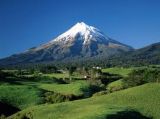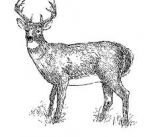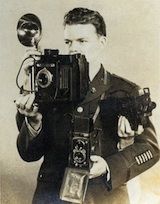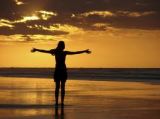- Forum
- General Discussion | Introductions | Off Topic Forum
- Photography General Discussion
- Advice for when shooting in direct sunlight
Advice for when shooting in direct sunlight
-
 Topic Author
Topic Author
- Kr15t
- New Kid On The Block
-
- Nikon d5000
- Followers: 9
- Posts: 34
-
Points:
0
Post #127700
Is there any advice or tricks I can learn to get better exposures?
-

- Pa2tr7
- New Kid On The Block
-
- nikon d3100
- Followers: 7
- Posts: 35
-
Points:
0
-

- Henry Peach
- Apprentice
-
- I currently use a 5DII or Sony Nex-3 most of the time.
- Followers: 50
- Posts: 2925
-
Points:
16
Post #127706
www.cambridgeincolour.com/tutorials/histograms1.htm
The meter tells you the exposure settings to make whatever you are pointed at middle gray tone. If you point the meter at something bright, the settings it gives you would result in the subject being darker.
Post #127707
Another thing you can do, is use flash to help fill in the shadows.
Whether you're using reflected light or flash, the key is that you are adding light to the shadows on your subject, thus hopefully bringing all of them into your dynamic range.
-
 Topic Author
Topic Author
- Kr15t
- New Kid On The Block
-
- Nikon d5000
- Followers: 9
- Posts: 34
-
Points:
0
-
 Topic Author
Topic Author
- Kr15t
- New Kid On The Block
-
- Nikon d5000
- Followers: 9
- Posts: 34
-
Points:
0
Post #127709
Henry Peach wrote: Learn to read your camera's histogram. It can help you see if the photo is under or over exposed.
www.cambridgeincolour.com/tutorials/histograms1.htm
The meter tells you the exposure settings to make whatever you are pointed at middle gray tone. If you point the meter at something bright, the settings it gives you would result in the subject being darker.
Yea I know the histogram is there, but I completely ignore it. lol. I guess I shouldn't.
-
 Topic Author
Topic Author
- Kr15t
- New Kid On The Block
-
- Nikon d5000
- Followers: 9
- Posts: 34
-
Points:
0
Post #127710
Kris4pics wrote: There are ways to improve you photos...mainly by controlling light. For example, if there is bright sunlight, you can use a reflector to bounce some light back onto the shadow side of your subject. The closer the reflector, the brighter the reflected light will be.
Another thing you can do, is use flash to help fill in the shadows.
Whether you're using reflected light or flash, the key is that you are adding light to the shadows on your subject, thus hopefully bringing all of them into your dynamic range.
I understand about filling in the shadows, but wouldn't adding more light over expose the areas that is full of sun?
-

- Baydream
- Moderator
-
- Canoni/60D/70D/5DmkIII
- Followers: 388
- Posts: 11185
-
Points:
7280
Post #127724
Kris4pics wrote: The fill light you end up using will even the overall light.
And the fill flash will tend to illuminate the closer areas (more likely to be dark).
There are several ideas of the Articles section of PT.
Shoot, learn and share. It will make you a better photographer.
fineartamerica.com/profiles/john-g-schickler.html?tab=artwork
-
 Topic Author
Topic Author
- Kr15t
- New Kid On The Block
-
- Nikon d5000
- Followers: 9
- Posts: 34
-
Points:
0
Post #127731
Baydream wrote:
Kris4pics wrote: The fill light you end up using will even the overall light.
And the fill flash will tend to illuminate the closer areas (more likely to be dark).
There are several ideas of the Articles section of PT.
Thanks. I'll check out those articles.
-

- rmeyer7
- Master of the Lens
-
- Canon 6D, Canon 5D mk. ii, Canon 50D
- Followers: 105
- Posts: 1640
-
Points:
2086
Post #127818
If you're worried about overexposure, you can expose for the background and then use lighting for your model/subject.
-

- Henry Peach
- Apprentice
-
- I currently use a 5DII or Sony Nex-3 most of the time.
- Followers: 50
- Posts: 2925
-
Points:
16
Post #127845
Kr15t wrote: I understand about filling in the shadows, but wouldn't adding more light over expose the areas that is full of sun?
The sun is usually still so bright that the light you add to the bright part isn't significant. Particularly if only using a speedlight or reflector.
-

- MLKstudios
- Banned
-
- D800 ;-)
- Followers: 72
- Posts: 4480
-
Points:
2
Post #127865
Matthew L Kees
MLK Studios Photography School
www.MLKstudios.com
[email protected]
"Every artist, was once an amateur"
-

- Office Guy
- Snapobsessed
-
- Nikon D800
- Followers: 87
- Posts: 382
-
Points:
2934
Post #128329
Henry Peach wrote: Learn to read your camera's histogram. It can help you see if the photo is under or over exposed.
www.cambridgeincolour.com/tutorials/histograms1.htm
The meter tells you the exposure settings to make whatever you are pointed at middle gray tone. If you point the meter at something bright, the settings it gives you would result in the subject being darker.
Good tips
Post #128778
Shooting into the sun:
Bracket. Then bracket more. You can get into a lot of theory about correct exposure and stuff but honestly, the right exposure right whether you've guessed it or based it on the theroy. Shoot right across the range, 2-3 stops either side and you've got everything you want, make your final decisions in post where you've got time to think about it properly. And hold the camera steady so you can use bits from different exposures in the final shot.
Shoot 16 bit RAW. The luminance range direct into sun is way too great for 8 bit and you're going to need to pull shadows and drop highlights.
This shot : Direct into sun, single shot (no comp) 16 bit RAW, picked out of 8 shots bracketed 3 stops either side of the meter ( spot meter reading taken from the rocks in the foreground). I'd have liked to get a bit more detail in the shadows of the cliffs over on the far side of the bay but not so much I could be bothered to grab it from another shot. The sun's just out of shot, I tried a few with it in shot but it blows too much.
- Forum
- General Discussion | Introductions | Off Topic Forum
- Photography General Discussion
- Advice for when shooting in direct sunlight
Latest Reviews
The Fujifilm XT5 is a 40MP mirrorless camera capable of 6.2K video at 30p. With those specs, it’s an ideal choice for photographers needing a camera to pull double duty for imaging and video.
The Canon EOS R100 is an entry-level mirrorless camera introduced in 2023. But just because it’s an entry-level camera doesn’t mean it’s a bare-bones camera. Find out why in this review!
Nikon’s retro-looking Nikon Zfc is anything but retro. Under its classic body is a host of features and amenities that make it a worthwhile compact mirrorless camera for 2024.
The Canon EOS R50 is one of the newest R-system cameras from Canon. Is it worth your money? Find out all the details you need to know in this comprehensive review.
Forum Top Posters
-
1TCav 6 posts
-
2Razky 4 posts
-
3Kenta 3 posts
-
4Garbo 3 posts
-
5Randy Shaw 3 posts
-
6Jason Stevens 3 posts
-
7Overread 3 posts
-
8Moe 2 posts
-
9Zach Mosher 2 posts
-
10CharleyL 2 posts
Latest Articles
To fill the frame means to expand the footprint of the subject in your shot. Get in close, zoom in, crop the image, or use other techniques to bring the subject to the forefront.
With these simple yet effective beginner photography tips, you can avoid some of the common mistakes beginners make and get improved results with your images.
Urban photography is a genre showcasing features in urban settings. You can photograph people, architecture, mass transit, and many other subjects. Learn how to do so in this guide!
The Nikon D850 might be an older DSLR, but it was ahead of its time when it debuted in 2017. That means it still has plenty of firepower to compete with today’s powerful mirrorless cameras.
The best beginner camera isn’t the same for everyone. That means having choice is of the utmost importance. In this guide, explore five excellent beginner camera options for 2024 and beyond.
Child portrait photography is a unique undertaking requiring special skills and talents to get the best results. Start mastering this photography niche with these essential tips!
The Fujifilm XT5 is a 40MP mirrorless camera capable of 6.2K video at 30p. With those specs, it’s an ideal choice for photographers needing a camera to pull double duty for imaging and video.
Using leading lines in photography helps improve the composition by drawing viewers in and leading their eye from the foreground to the background. Explore some fine examples of this in this guide!
















